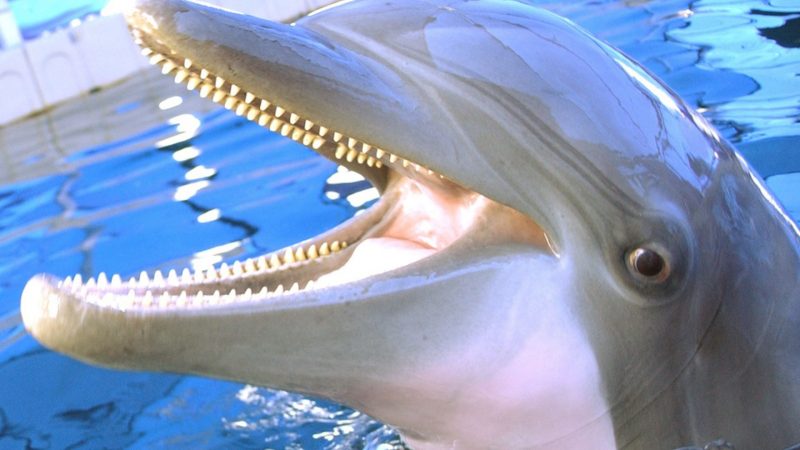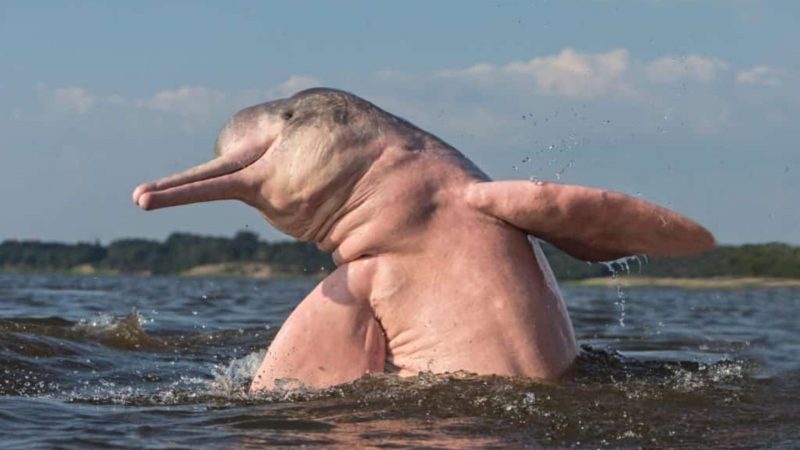
The Surprising Facts About Dolphin Teeth You Need to Know
Dolphins can be found in all of the world’s seas, as well as in several of the world’s greatest freshwater rivers. They are classified as cetaceans, or marine animals, like whales. Dolphins are classified into four families, with 40 extant (living) species. Thirty of these 40 species are oceanic dolphins from the Delphinidae family. The world’s river dolphins are represented by the other three families Iniidae, Pontoporiidae, and Platanistidae. Dolphins are animals with teeth that consume flesh.
Dolphin teeth have long been a subject of fascination for scientists and laypeople alike. There is a lot to learn about the teeth of these amazing creatures!
How many teeth do dolphins have?

Dolphins originated from terrestrial animals millions of years ago. They developed considerably more teeth than their terrestrial forebears as they adapted to living in the water. Dolphins are classified as polyodonts because they have more than 44 teeth per mouth quadrant (imagine upper, lower, left, and right). Dolphins certainly live up to the moniker polyodonty, which means “many teeth.”
Let’s have a look at the teeth of some of the most prevalent dolphin species.
- Short-beaked common dolphin: 160-228 teeth
- Long-beaked common dolphin: 188-268 teeth
- Bottlenose dolphin: 72-116 teeth
- Spinner dolphin: 180-260 teeth
- Pacific white-sided dolphin: 92-144 teeth
Types of teeth dolphins have

Dolphins are classified as odontocetes, which means toothed cetaceans. Other cetaceans with this trait include sperm whales, beaked whales, and porpoises. The Orca whale is the biggest member of the dolphin family. Despite its size, the orca commonly known as a killer whale has the same teeth as the considerably smaller bottlenose dolphin.
Virtually all dolphins are homodonts, which means they have only one type of tooth. Humans, on the other hand, have four separate tooth types: incisors, canines, premolars, and molars. The dolphin’s one tooth is tiny (up to 12 inches long) and conical. These teeth can be soft or keen, depending on the kind of dolphin and what they like to consume.
Do all dolphins have teeth?
All dolphins have teeth. The majority of them have numerous teeth up to 150, while one species that is Risso’s dolphin has just 20 teeth in its whole mouth. Moreover, both the Risso’s dolphin and the Amazon river dolphin have slightly more complicated teeth than the ordinary cetacean.
Some interesting dolphin teeth facts

- Dolphin teeth are not used for chewing. Unlike human teeth, dolphin teeth are not used for chewing. Dolphins use their teeth for grasping and holding onto prey. Dolphins swallow their food whole, and their stomachs are designed to break down the food into tiny particles.
- Dolphins can have up to 260 teeth. Dolphin teeth are arranged in rows along the inside of their jaws, with each row containing up to 65 teeth. Some species of dolphins have more teeth than others, with the common dolphin having an average of 110 teeth, while the bottlenose dolphin can have up to 260 teeth.
- Dolphin teeth continuously grow and fall out. Like other mammals, dolphin teeth grow continuously throughout their lives. As the old teeth at the front of the rows wear down, they are replaced by new teeth growing behind them.
- Dolphin teeth vary in size depending on their location in the jaw. The front teeth are usually larger and more robust, while the teeth at the back of the jaw are smaller and more pointed.
- Dolphin teeth shape are cone-shaped. Unlike human teeth, which have flattened tops for grinding, dolphin teeth are cone-shaped and pointed. This allows them to easily catch and hold onto slippery prey.
- Dolphin teeth are coated in enamel. Dolphin teeth are covered in a layer of enamel, which is the hardest substance in the body. This protects the teeth from damage during hunting and chewing.
- Dolphins can lose their teeth from injury or disease. Dolphins can lose their teeth from injury or disease, and missing teeth can impact their ability to hunt and eat. However, dolphins have been known to compensate for missing teeth by using other teeth or altering their hunting strategies.
How to calculate dolphins’ age from their teeth?
Dolphin calves feed on their mother’s milk for the first several months of their lives. Their teeth begin to form at three months of age. They have all of their adult teeth at the age of six months. Dolphins are monophyodonts, which means they have only one pair of pearly whites for the rest of their lives.
Dolphin teeth develop in layers, much like a tree. The dolphin grows a layer of tooth material during every year of life. Scientists may utilize these layers to establish the exact age of a dolphin through necropsies, which are medical exams of deceased dolphins.
Dolphins also exhibit dental wear as they age. This is most noticeable in the anterior teeth, which receive the most usage. Teeth get blunter and more rounded off as they wear, and may finally seem stubby. Dolphins’ teeth do not renew; once they wear out, they do not regrow.
In conclusion, dolphin teeth are not only fascinating but also serve important functions in their hunting and feeding habits. Understanding the unique structure and properties of dolphin teeth can provide researchers and conservationists with valuable insights into these amazing creatures.
Also Read:
Everything You Need To Know About What Dolphins Eat
Discover Fascinating And Disturbing Facts About Dolphin
Orcas: The World’s Largest Dolphin



